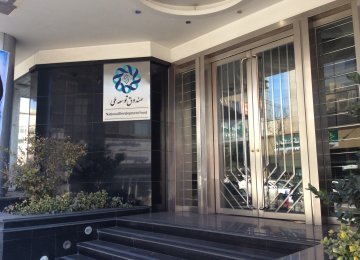The National Development Fund of Iran, the national sovereign fund established in 2011, has published a comprehensive report on the first five years of its activity up to March 20, 2017.
NDFI has allocated close to $35 billion in foreign exchange loans for national projects during this period, most of which has been offered through the organization’s agent banks.
As the report indicates, the energy sector and its affiliated industries have accounted for more than $28 billion of NDFI’s allotted resources, which constitute 80.2% of the total.
Upstream oil and gas projects that explore and produce crude oil and natural gas have pocketed the lion’s share of NDFI’s credits. Oil and gas upstream industries have collected $16.77 billion of the sovereign wealth fund’s resources, which equal 48% of the total. Up to this point, $5.5 billion of the earmarked resources have been paid.
The funds were used in 11 projects. Private sector and non-government companies affiliated to public organizations respectively took $9.9 billion and $6.8 billion.
More than $2.8 billion have been considered for 10 petrochemical projects, but so far only 5 of them have managed to finalize their credits at $1.2 billion–$149 million of which have been paid in full.
NDFI also allocated $3.7 billion for the development of four refineries during the period. All of the four refineries finalized their credits and received $870 million by the end of the aforementioned period.
Petrochemicals and refineries collectively took in close to 19% of NDFI’s credits that amounted to $6.5 billion. Private sector projects accounted for $4.9 billion while $1.6 billion have been considered for the projects of quasi-government companies.
Power plant projects have also accounted for a significant share of the sovereign wealth fund’s proffered resources. A sum of $4.3 billion has been allocated for 43 power plant projects during the six-year period. So far, $2.7 billion worth of funds have been offered to 28 of these projects, $1.2 billion of which have been disbursed.
Of the 32 steel projects for which $2.4 billion had been provisioned, 26 of them managed to finalize their funds worth $1.5 billion. However, 25 of the projects managed to receive $739 million of the promised credits.
Private sector is again responsible for the implementation of most of the projects–around 75% in this field.
The value of credits earmarked for other national projects in fields like cement and tile, downstream oil and gas industries and transportation reached $4.8 billion to support 211 projects. This is while 152 of the projects managed to pocket $1.45 billion worth of credit from NDFI’s resources.
Agent Banks
NDFI uses agent banks to distribute its resources to each eligible national project.
Among the agent banks, Bank Mellat has doled out the biggest amount of credits. The bank has allotted $9.6 billion during the six-year period, which accounts for 27.7% of all NDFI resources.
This is while Bank of Industry and Mine has been the frontrunner when it comes to the number of individual loans. The bank doled out funds to 209 projects that account for 65% of all projects that benefited from the development fund. The bank’s allotted credits also accounted for 21.2% of all allocated funds.
Bushehr and Khuzestan provinces, because of their vast oil and gas fields, accounted for the biggest share of the sovereign wealth fund’s credits among all the provinces, accounting for 25.8% and 20.9% of the total sum, respectively. The provinces of Fars, Hormozgan and Ilam also owned 6.95%, 6.32% and 5.25% of all the offered credits respectively.
NDFI has also made both foreign exchange and rial investments in private and state-owned banks during its six-year history. The value of forex investments reached $6.6 million while investments in local currency topped 110 trillion rials ($2.86 billion).
The goal of establishing NDFI was to save resources when the government earns abundant revenues, especially from oil and gas sales, to use them in line with plans and needs when revenues drop, especially at times of oil price slump.






Add new comment
Read our comment policy before posting your viewpoints